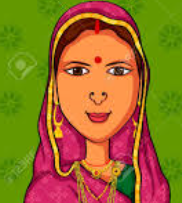Exploring the Elegance of Bihar’s Traditional Dress
Introduction
Bihar, a state rich in cultural diversity and heritage, boasts a vibrant tapestry of traditions, customs, and attire. One of the most intriguing aspects of Bihar’s culture is its traditional dress, which reflects the essence of this historical land. In this article, we will delve into the enchanting world of Bihar’s famous dress, exploring its significance, history, and the stories woven into its fabric.
The Essence of Bihar’s Traditional Dress
Bihar’s traditional dress is not merely a piece of clothing; it’s a manifestation of the state’s deep-rooted cultural heritage. Often referred to as “Bihari attire,” it comprises various garments, each with its unique charm and purpose. This attire is worn on special occasions, festivals, and ceremonies, preserving the state’s traditions through generations.
Bihar Famous Dress: Key Elements
To truly understand Bihar’s traditional dress, we must dissect its key elements, each playing a pivotal role in its overall aesthetic and cultural significance.
- Dhoti and Kurta: The quintessential Bihari attire for men consists of a dhoti and kurta. The dhoti, a piece of cloth wrapped around the waist, symbolizes simplicity and humility. The kurta, a long shirt-like garment, adds elegance to the ensemble.
- Sari: Women in Bihar often wear the traditional sari. The beauty of a Bihari sari lies in its intricate designs and vibrant colors. Saris are usually draped in the seedha pallu style, which is unique to Bihar.
- Angavastram: Both men and women may wear an angavastram, a piece of unstitched cloth draped over the shoulders. It is a symbol of grace and respect.
- Jewellery: Bihar’s traditional attire is complemented by intricate jewelry pieces. Women adorn themselves with bangles, necklaces, and earrings, while men wear rings and bracelets.
Historical Significance of Bihar’s Traditional Dress
The roots of Bihar’s traditional dress can be traced back to ancient times. The dhoti and kurta for men have been worn for centuries, and the sari has also been an integral part of women’s clothing in this region. These garments have evolved over time, reflecting the influences of various dynasties that ruled Bihar, such as the Mauryas, Guptas, and Mughals.
The dhoti and kurta, for instance, were popularized during the Mauryan era and have remained a symbol of simplicity and humility ever since. The use of vibrant colors and intricate designs in Bihari saris can be attributed to the artistic sensibilities of the Mughal period.
The Cultural Significance of Bihar’s Dress
Bihar’s traditional dress is not just a matter of clothing; it carries profound cultural significance. It symbolizes the values and traditions that have been cherished by the people of Bihar for generations.
- Respect and Humility: The dhoti and kurta worn by men are a symbol of respect and humility. They signify a connection to the land and its people, as well as a sense of belonging.
- Colorful Expression: The vibrant colors and designs in Bihari saris are a reflection of the state’s rich artistic heritage. They represent the joy, festivity, and celebration that are an integral part of Bihar’s culture.
- Cultural Identity: Bihari attire is a way for people to express their cultural identity and pride. It is a reminder of the state’s glorious history and traditions.
Bihar Famous Dress: Contemporary Relevance
In today’s fast-paced world, traditional attire often takes a backseat to modern clothing. However, Bihar’s traditional dress continues to hold significance in various aspects of life.
- Festivals and Celebrations: During festivals like Chhath Puja, Diwali, and Holi, people in Bihar don their traditional attire as a mark of respect to their culture and as a way to connect with their roots.
- Ceremonies and Rituals: Traditional dress is often worn during important ceremonies like weddings, thread ceremonies, and other religious rituals.
- Cultural Performances: Bihari attire is frequently worn by artists and performers during cultural events and dance performances, preserving the state’s cultural heritage.
Maintaining the Tradition
Despite the influence of modern fashion, Bihar’s traditional dress remains an integral part of the state’s cultural fabric. Efforts are being made to promote and preserve this rich heritage. Organizations and individuals are working together to ensure that the younger generation continues to embrace and appreciate the beauty of Bihari attire.
Conclusion
Bihar’s traditional dress is not just clothing; it’s a window into the state’s rich history and culture. It embodies the values of humility, respect, and cultural pride that the people of Bihar hold dear. Whether worn during festivals, ceremonies, or cultural performances, Bihari attire continues to be a symbol of the state’s enduring heritage.
In a world that constantly changes, the traditional dress of Bihar serves as a reminder of the timeless traditions that have shaped this vibrant land. So, the next time you see someone wearing a dhoti, kurta, or a colorful Bihari sari, remember that it’s not just clothing; it’s a piece of Bihar’s soul, carrying with it the stories, traditions, and pride of generations past and present.
Read more A Symphony of Elegance: Unveiling the Bihar Traditional Dress – Tussar Silk Sarees and Sherwanis

